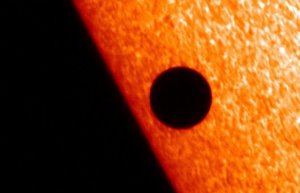Researchers are getting increasingly concerned about declining honey bee populations and bee Colony Collapse Disorder (CCD); in order to learn more about the "drivers" of the issue scientists attached about 5,000 sensors to the backs of the insects.
"Honey bees play a vital role in the landscape through a free pollination service for agriculture, which various crops rely on to increase yields. A recent CSIRO study showed bee pollination in Faba beans can lead to a productivity increase of 17 per cent," Commonwealth Scientific and Industrial Research Organisation (CSIRO) science leader Doctor Paulo de Souza, who leads the swarm sensing project, said in a news release.
"Around one third of the food we eat relies on pollination, but honey bee populations around the world are crashing because of the dreaded Varroa mite and Colony Collapse Disorder. Thankfully, Australia is currently free from both of those threats," he said.
The researchers will pay attention to the bees that feed at sites that contain commonly-used chemicals in an effort to uncover how pesticides affect the bee population.
"Using this technology, we aim to understand the bee's relationship with its environment. This should help us understand optimal productivity conditions as well as further our knowledge of the cause of colony collapse disorder," de Souza said.
The monitoring devices are tiny "Radio Frequency Identification sensors." the researchers can create a three dimensional model with the information to help them visual the bees' patterns of movement.
"Bees are social insects that return to the same point and operate on a very predictable schedule. Any change in their [behavior] indicates a change in their environment. If we can model their movements, we'll be able to [recognize] very quickly when their activity shows variation and identify the cause. This will help us understand how to [maximize] their productivity as well as monitor for any biosecurity risks," de Souza said.
The study could also help farmers improve their crop management and get the most out of the pollinating insects.
"We're working with the University of Tasmania, Tasmanian Beekeepers Association, local beekeepers in Hobart and fruit growers around the state to trial the technology. Many growers rely on wild bees or the beekeepers to provide them with pollinators so they can improve their crops each year. Understanding optimal conditions for these insects will improve this process," de Souza said.
In order to attach the sensors the bees are refrigerated which sedates them; the sensors are then attached to the bees' backs with an adhesive before they wake up and are released back into the environment.
"This is a non-destructive process and the sensors appear to have no impact on the bee's ability to fly and carry out its normal duties," de Souza said.
In the future the researchers hope to make the sensors even smaller so that they can be attached to tiny insects like mosquitos and fruit flies.
© 2025 HNGN, All rights reserved. Do not reproduce without permission.








